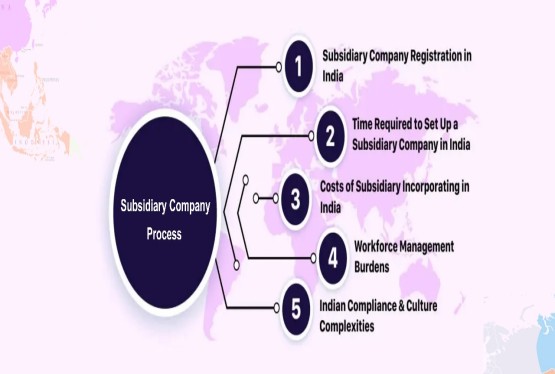The choice between establishing a private or public company is an important decision that significantly influences a business line. These two designations, while participating in similarities in their pursuit of success, come with distinct characteristics that shape their operations, governance, and overall strategies. In this complete disquisition, we'll navigate through the intricate differences between private company and public company, furnishing an in- depth analysis of each hand.
Private vs. Public Company - Differences
1. Ownership Structure
Private Company
In a private company, ownership is generally limited to a select group of individuals or entities. This frequently includes founders, early investors, and occasionally key employees. The ownership structure is closed, fostering a more intimate and nearly- knit terrain. Decision- timber is generally streamlined due to the smaller circle of stakeholders.
Public Company
Contrastingly, a public company opens its power to the public through the allocation of freely traded shares. Anyone with the fiscal capacity can buy shares, becoming a part- proprietor of the company. This broad power structure introduces a myriad of stakeholders, ranging from institutional investors to individual shareholders. As a result, decision- making processes can be more complex and time- consuming.
2. Share Trading
Private Company
Shares of private companies aren't traded on public stock exchanges. The transfer of ownership generally occurs through private deals negotiated among the being stakeholders or implicit investors. This lack of public trading means that the liquidity of shares is limited, and the process of buying or dealing power stakes is frequently more defined.
Public Company
Public companies, by description, have shares that are intimately traded on stock exchanges. This enables shareholders to buy and vend their shares fluently. The actuality of a liquid request for shares enhances the company's visibility and allows investors to enter or exit their positions snappily. Still, this liquidity can also lead to advanced volatility in the stock price.
3. Regulatory Compliance
Private Company
Private companies face smaller regulatory obligations compared to their public counterparts. They're subject to less strict reporting conditions and have further inflexibility in terms of fiscal exposure. This provides private companies with lesser sequestration and the capability to operate in a lower position of external scrutiny.
Public Company
Again, public companies are subject to expansive nonsupervisory compliance. They must cleave to strict reporting norms executed by nonsupervisory bodies similar as the Securities and Exchange Commission (SEC) in the United States. This heightened position of translucency is designed to cover investors and insure the fair and accurate representation of the company's fiscal health.
4. Access to Capital
Private Company
Private companies may find it grueling to raise significant capital compared to their public counterparts. Their backing sources are frequently limited to private investors, adventure plutocrats, or bank loans. While this can give further control to the authors, it may hamper the company's capability to pursue large- scale systems or rapid-fire expansion.
Public Company
Public companies have a distinct advantage in terms of penetrating capital. By issuing shares on the stock request, they can tap into a broad and different pool of investors. This capability to raise finances from the public requests provides public companies with the fiscal coffers demanded for ambitious systems, exploration and development, and other strategic enterprises.
5. Number of Shareholders
Private Company
Private companies generally have a limited number of shareholders, frequently comprising authors, early investors, and crucial workers. This lower, nearly- knit shareholder base can contribute to a more unified vision and faster decision- making processes.
Public Company
In discrepancy, public companies can have a vast number of shareholders, ranging from institutional investors to vend shareholders. Managing the prospects and interests of this different group requires effective communication and translucency. Shareholder meetings and voting come integral corridor of the governance structure, impacting strategic opinions.
6. Fiscal translucency
Private Company
Private companies generally do not need to expose as important fiscal information as public companies. While they may partake fiscal details with crucial stakeholders, the position of translucency is at the discretion of the company's operation. This confidentiality can be profitable in terms of maintaining a competitive edge.
Public Company
Public companies are commanded to give detailed fiscal information to the public and nonsupervisory bodies regularly. Daily and periodic reports, checked fiscal statements, and other exposures are essential factors of a public company's commitment to translucency. This information is pivotal for investors and judges to form informed opinions.
7. Liquidity of Shares
Private Company
Shares of private companies aren't traded on public exchanges, performing in limited liquidity. possessors of private company shares may face challenges in chancing buyers or merchandisers for their stakes and deals frequently involve concession and agreement between the involved parties.
Public Company
Public companies profit from the liquidity of their shares, which are traded on stock exchanges. This liquidity allows shareholders to buy or vend their positions snappily at prevailing request prices. still, it also exposes the company's stock to request volatility and enterprise.
8. Decision- Making Dynamics
Private Company
With a lower group of stakeholders, decision- making in private companies tends to be nimbler and more effective. The lack of regulatory processes allows for quicker responses to request changes or strategic shifts.
Public Company
Decision- making in public companies involves a more intricate process. Boards of directors, administrative brigades, and shareholders all play significant places. opinions may bear blessings from colorful situations, leading to a more deliberate but potentially slower decision- making process.
9. Long- Term Vision
Private Company
Private companies frequently have the luxury of maintaining a long- term vision without the pressure of meeting short- term shareholder prospects. This allows for strategic planning that spans several times or indeed decades.
Public Company
Public companies, on the other hand, are under constant scrutiny from analysts, institutional investors, and the media. This can produce pressure to deliver short- term results, potentially impacting the capability to concentrate on long- term strategic enterprise.
10. Exit Strategy
Private Company
Exiting a private company frequently involves private deals, combinations, or accessions. The options for liquidity events are more limited, and the timing and terms of similar exits may depend on accommodation with other stakeholders.
Public Company
Public companies have a range of exit options, including combinations and accessions, as well as public immolations. The capability to go public through an Initial Public Offering (IPO) provides an avenue for founders and early investors to realize the value of their shares.
Conclusion
The decision to operate as a private or public company involves careful consideration of colorful factors. Each designation comes with its own set of advantages and challenges, and the right choice depends on the unique pretensions, vision, and circumstances of the business. While private companies offer lesser control and privacy, public companies enjoy increased access to capital and liquidity. Entrepreneurs, investors, and business leaders must precisely weigh these factors to determine the most suitable path for their chances. Whether aiming for a more intimate, controlled terrain or seeking the benefits of widespread ownership and financial flexibility, understanding the nuanced differences between private and public companies is essential for the complex geography of commercial structures.
FAQs
Q1. What is the primary difference between a private and public limited company?
Ans. The main difference lies in ownership and public access to shares. A private limited company restricts the transfer of its shares and limits the number of shareholders, typically to 50. In contrast, a public limited company offers its shares to the general public through stock exchanges, with no upper limit on the number of shareholders.
Q2. How does the liability of shareholders differ between the two?
Ans. Both private and public limited companies offer limited liability protection to their shareholders. This means the shareholders' financial liability is limited to the amount they invested in shares, and their personal assets are not at risk for the company’s debts.
Q3. What are the differences in regulatory requirements?
Ans. Public limited companies face stricter regulatory requirements, including mandatory audits, regular disclosures, and compliance with stock exchange regulations. Private limited companies, on the other hand, have fewer compliance obligations, making them easier and less costly to manage.
Q4. Can private limited companies transition into public limited companies?
Ans. Yes, a private limited company can convert into a public limited company. This process involves meeting regulatory requirements, increasing the number of shareholders, and altering the company’s Articles of Association to comply with public company standards.
Q5. Which type of company is better for small businesses?
Ans. A private limited company is generally better suited for small businesses. It offers limited liability, privacy, and lower compliance costs, making it an ideal choice for startups and smaller operations.
Q6. Do public limited companies have ownership restrictions?
Ans. No, public limited companies do not have ownership restrictions. Their shares are freely transferable, and anyone from the public can buy them, provided they are available on a stock exchange.
Q7. Which company type offers better access to capital?
Ans. Public limited companies have better access to capital as they can raise funds by issuing shares to the public. Private limited companies rely on internal funding, loans, or contributions from a limited number of shareholders.












_crop10_thumb.jpg)





_crop10_thumb.jpg)




























-Form_crop10_thumb.jpg)

_crop10_thumb.jpg)























_learn_crop10_thumb.jpeg)































_crop10_thumb.jpg)

_crop10_thumb.jpg)





















_crop10_thumb.jpg)















_for_Foreign_Directors_learn_crop10_thumb.jpeg)




_Act,_2015_learn_crop10_thumb.jpg)



































_learn_crop10_thumb.jpg)


































